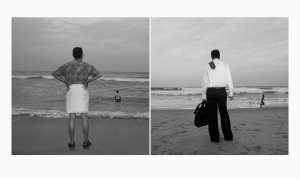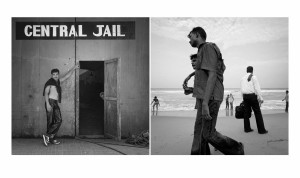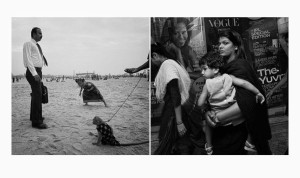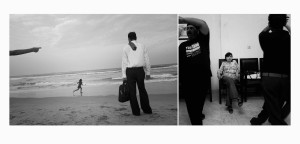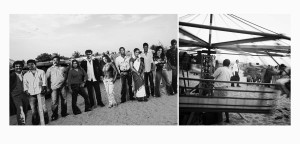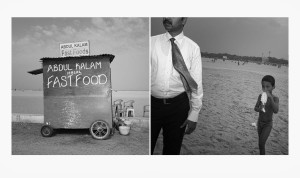A series of 9 diptychs on urban professionals in Chennai, produced in association with Tasveer Gallery and Mid-day. Exhibited in 4 metros in India
Urban Indians are in the grip of transformations, numerous little yet historically epic revolutions of economics, society and culture. We have all heard that India is poised to become the world’s third largest economy, that it will have more English speakers than the United States eventually and that we have the world’s fastest growing middle class.
However, in a country of over 1 billion people, only 35 million mostly urban Indians pay taxes. Nike wearing yuppies jostle for space with rag pickers, store guards earn less than the price of a pair of sneakers that they watch over, billboards promise everything in a landscape of inadequate infrastructure and a much hyped InfoTech industry employs only about 1 million people. In 2001, the population density of the Chennai metropolitan area was 5,922 per km² making it one of the most densely populated cities in the world. It has a sex ratio of 951 females to every 1000 males in a total population of about 8 million. The judicial system has a backlog of thousands of cases and resources like water and electricity are limited. It has the fourth highest population of slum dwellers among all cities in India, with about 18.6% of its population living in slums.
Chennai seems to defy definitions with exceptions to the rule and rules to the exceptions. Traditions, histories and processes of the past adapt and evolve with an apparently uneven modernizing present. It also has literacy of 80.14 %, much higher than the national average of 64.5 % According to the CII, Chennai’s is estimated to grow to a $100-billion economy, 2.5 times its present size, by the year 2025. It has a vibrant film and music industry, a burgeoning “international dance class” movement, India’s best Health care facilities and has the beginnings of some of India’s most forward political movements.
It is within this ethos, subconscious and conscious that urban Chennaiites’ live. I have attempted to delve beneath clichés and with photographs tell stories about the secrets, trials and ethos of urban Chennai. Given the impression that the urban yuppie so to speak is literate, English speaking and “modern” in his thinking I have consciously avoided only shooting “a class of persons, Indian in blood and colour, but English in taste, in opinions, in morals, and in intellect (emphasis mine)”. … To hopefully compassionately and on occasion with humor reveal to you my take, on what it is to be young, employed and alive in Chennai today, regardless of ones language, economic class or social skills.
I chose mainly “mid level” and “lower level” employees and professionals to include in my frames as they form the bulk of Chennai’s work force which does not only cater to MNC’s and the IT or electronic industries. I made images while on a walk with a friend who regularly comes to the beach, as “it’s the only place to go”, as most arcades and pubs, or this idea of entertainment, is unaffordable to most professionals in Chennai. The beach is free and is frequented every day by tens of thousands of working people with nowhere else to go.
I have used a single image from this walk, a forced daily walk of sorts for many for lack of other options, in juxtaposition with other images from different times of day, from the lives of various people kind enough to let me into their worlds.
